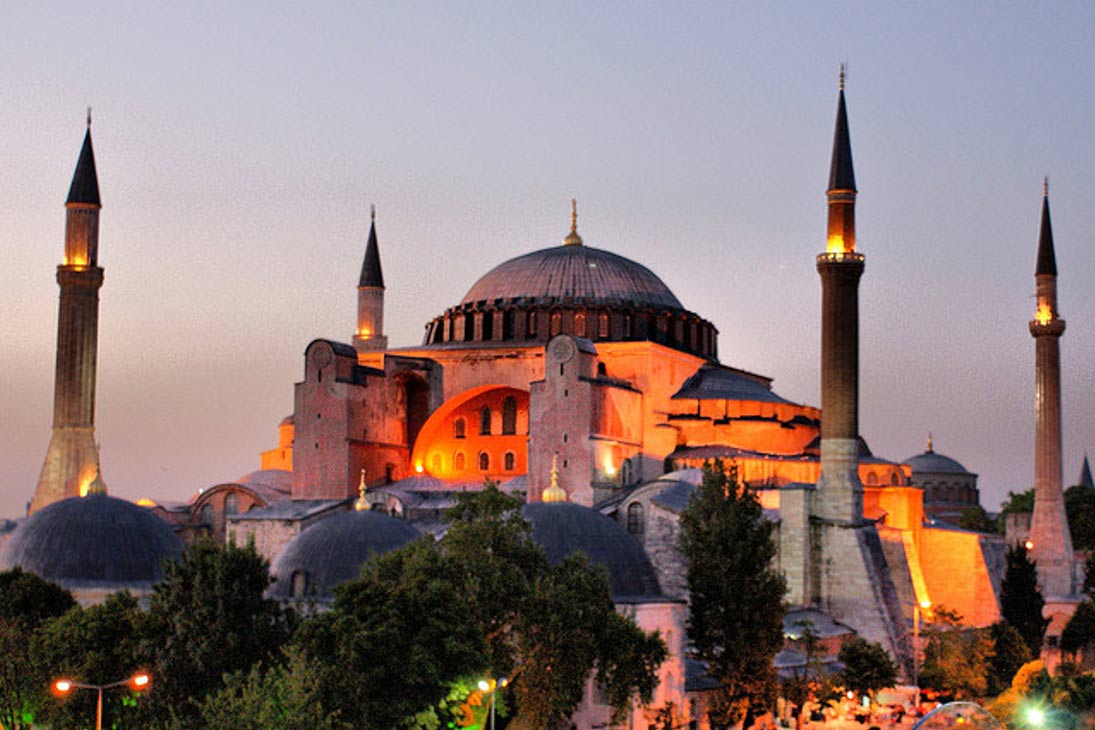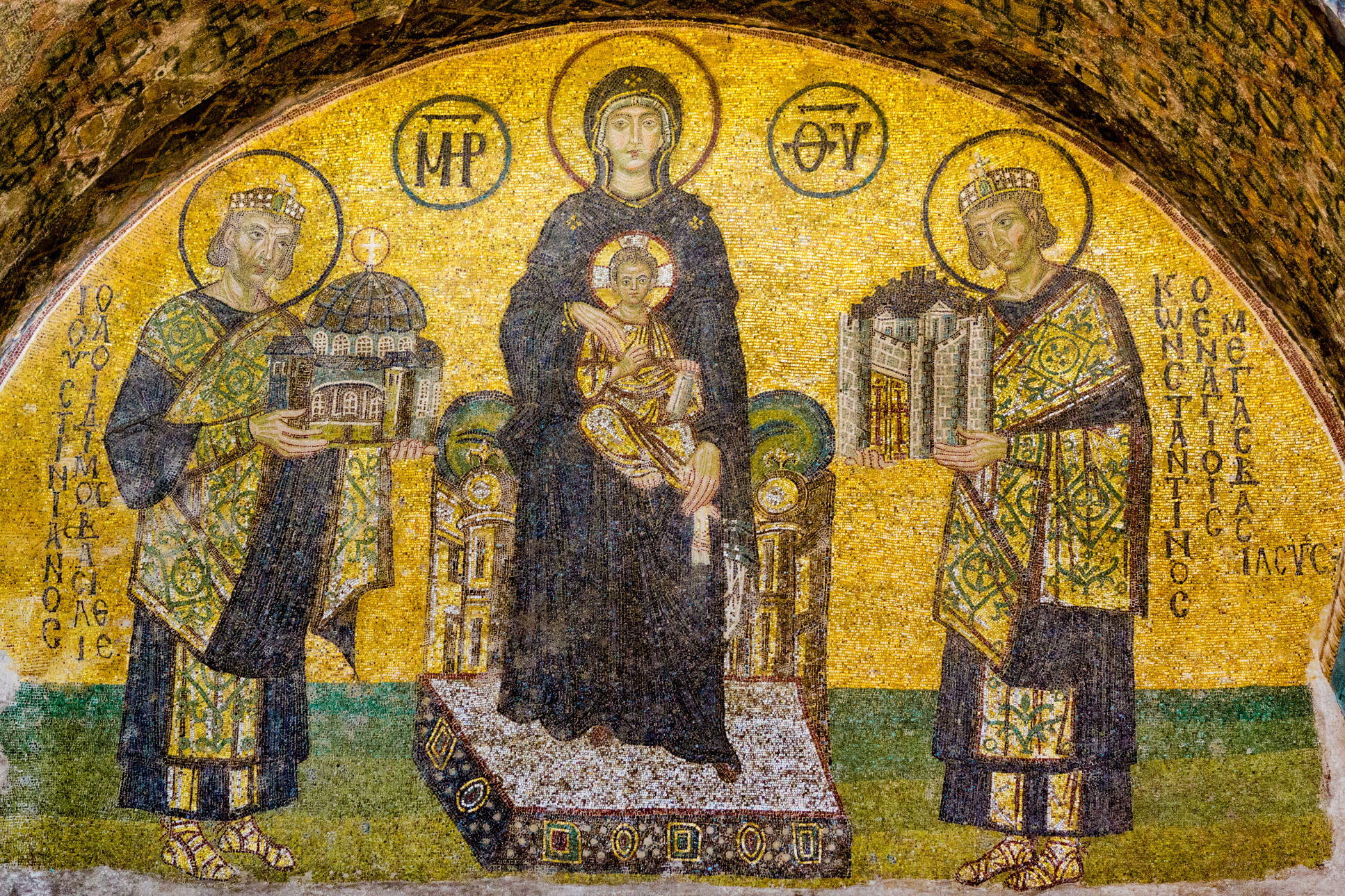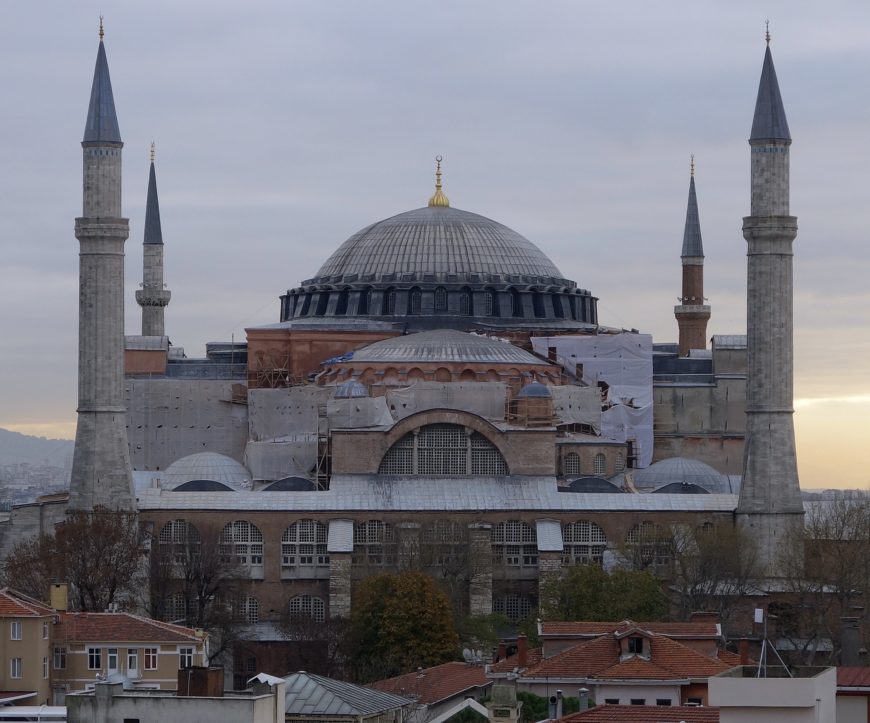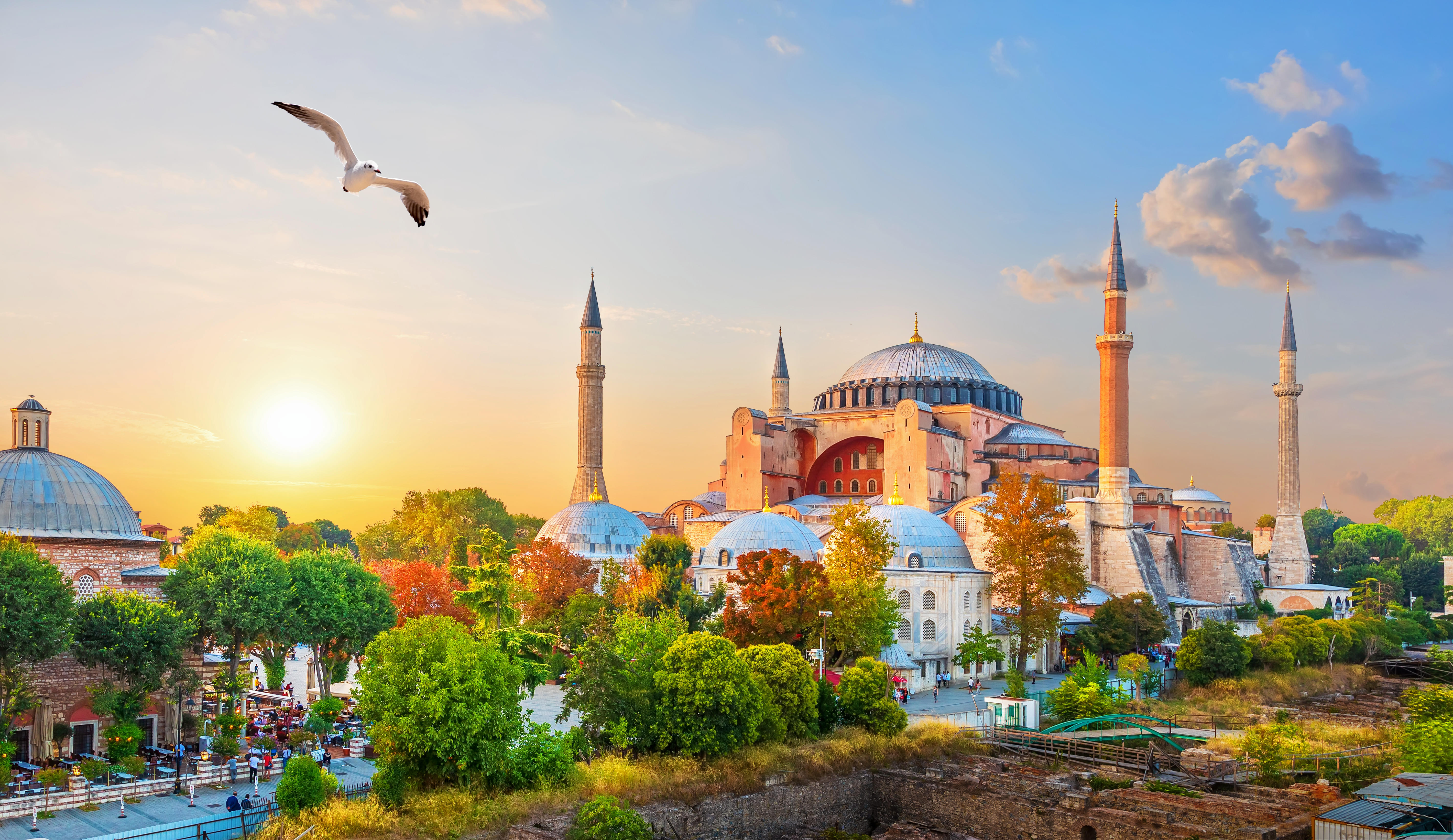Unveil the Mystical Mosaic Glory of Istanbul's Hagia Sophia

Hey there! Today, we will discuss one of the most significant landmarks in Istanbul, Turkey - Hagia Sophia. If you plan on visiting Istanbul anytime soon, this article will give you a bit of historical and cultural context about this incredible structure.
Historical background of Hagia Sophia
Hagia Sophia was first built as a Christian cathedral in 537 AD under the Byzantine Emperor Justinian I. It was the largest cathedral in the world at that time and stood as the pinnacle of Byzantine architecture. However, after the Ottoman Turks conquered Constantinople in 1453, Hagia Sophia was converted into a mosque by Sultan Mehmed II.
The mosque underwent several renovations over the centuries, including adding minarets and constructing a madrasa, a religious school. In 1935, Mustafa Kemal Atatürk, the founder of the Turkish Republic, transformed Hagia Sophia into a museum, opening it to the public and preserving it as a symbol of Christian and Islamic history.
Why it's a significant landmark
Hagia Sophia is an incredible representation of the intersection between Christianity and Islam. The exterior resembles a traditional Byzantine cathedral, while the interior is decorated with Islamic calligraphy and tiles. The domed interior is also home to intricate mosaics and frescoes depicting Christian and Islamic imagery.
In addition to its cultural significance, Hagia Sophia has always been a marvel of technological and architectural prowess. Its massive dome and impressive size were engineering feats of their time, and it remains an awe-inspiring structure today.
So, visiting Hagia Sophia is worth your time if you're interested in history, culture, or architecture.

Architecture of Hagia Sophia
So, you're planning on visiting Hagia Sophia and want to know more about the architecture of this magnificent structure? Great idea! In this article, we'll explore Hagia Sophia's architecture's design, layout, and symbolism.
Design and layout of the structure
The architecture of Hagia Sophia is a testament to the skill and ingenuity of Byzantine and Ottoman architects. The building's massive dome, which is 55.6 meters high and 31.8 meters in diameter, is the crowning achievement of its design. The dome is supported by four massive piers, reinforced by arches extending out to the building's walls.
The interior of Hagia Sophia is vast and airy, thanks to the building's spacious design. The walls and floors are marble, while the dome is covered in glittering mosaics that depict religious and secular images. Forty strategically placed windows also light the interior to let in the most natural light.
Mosaic tiles and their symbolic meanings
The mosaic tiles that cover the interior of Hagia Sophia are among its most notable features. The tiles were added over the centuries, starting in the Byzantine era and continuing through the Ottoman period. Many tiles are decorated with Islamic calligraphy, while others depict Christian imagery, such as crosses and figures of saints.
The tiles also have symbolic meanings. For example, the tiles around the apse depict the Virgin Mary, while the tiles around the dome feature images of the Christ Pantocrator, an important Christian figure. The tiles around the windows depict angels, cherubs, and other celestial figures.
The architecture of Hagia Sophia is a true masterpiece that blends the best of Byzantine and Ottoman design. Whether you're interested in history or architecture, visiting Hagia Sophia will leave you in awe of this incredible landmark.

Hagia Sophia as a Christian Church
Welcome to your guide on the Christian history of Hagia Sophia! As you plan your visit to this iconic landmark, it's important to understand the structure's roots and its significance in Christianity. In this article, we'll delve deeper into the past of Hagia Sophia and explore how it was used as a Christian church.
The Prelude to Christianity in Istanbul
Before Hagia Sophia, Istanbul was home to several temples and places of worship. One of the most notable was the Temple of Artemis, a massive building with multiple altars and an impressive array of statues. As Christianity began to spread throughout the empire of Constantinople, the need for a grand church to represent the faith grew.
Religious practices and structures
When construction on Hagia Sophia began in 537 AD, it was meant to be the largest Christian church in the world. The building was designed to reflect Christian ideals and values, with intricate mosaics and stunning architectural features. During its time as a Christian church, the building hosted many significant religious events, including the coronation of several emperors.
As you explore Hagia Sophia's interior, note the Christian symbolism throughout. From the mosaic tiles depicting the Virgin Mary and Christ Pantocrator to the ornate chandeliers and altars, the building is a testament to the Christian faith.
The history of Hagia Sophia as a Christian church is a key component of its significance as a cultural and historical landmark. As you visit this magnificent structure, appreciate the Christian influence and legacy woven throughout its history.

Hagia Sophia as an Islamic Mosque
As you prepare to visit this magnificent structure, it's important to understand the significance of its transformation from a Christian church to a mosque. In this article, we'll explore the history of Hagia Sophia as an Islamic mosque and the cultural influences that shaped its architecture.
The Conversion of Hagia Sophia to a Mosque
After the conquest of Constantinople by the Ottomans in 1453, Hagia Sophia was transformed into a mosque. The original Christian features of the building, such as the altar and crucifix, were replaced with Islamic elements, including a mihrab and a minbar. The building served as a mosque for over four centuries, symbolising Islamic power and influence in the region.
Islamic culture and artistic influences
The conversion of Hagia Sophia to a mosque also brought a new architectural design style. Islamic influence can be seen in the addition of minarets, the central dome surrounded by smaller domes, and the incorporation of Islamic calligraphy and geometric patterns into the design. These unique features created a new, distinct style known as Ottoman Baroque.
As you explore Hagia Sophia's interior, note the Islamic influences throughout. From the intricate calligraphic inscriptions adorning the walls to the stunning tile work and colourful mosaics, the building is a testament to the rich cultural heritage of Istanbul.
The transformation of Hagia Sophia from a Christian church to an Islamic mosque represents the cultural evolution of Istanbul over the centuries. As you visit this iconic landmark, take some time to appreciate the Islamic influences and unique architectural style that define its legacy.

Features of Hagia Sophia
As you walk through the magnificent structure of Hagia Sophia, it's easy to be overwhelmed by the beauty and architectural complexity of the building. Here, we'll explore some of the most notable features of Hagia Sophia that you can't miss!
The Central Dome of Hagia Sophia
The central dome of Hagia Sophia is the most distinctive feature of the building and is one of the largest domes in the world. The dome was designed to create a sense of weightlessness and awe, appearing to float effortlessly above the interior space. It is supported by four massive piers and two semi-domes, which help to distribute its weight evenly.
The Deesis Mosaic
The Deesis Mosaic is one of the most important artistic treasures of Hagia Sophia. Located in the south gallery, the mosaic depicts Christ flanked by the Virgin Mary and John the Baptist. It is a remarkable piece of Byzantine art notable for its attention to detail and expressive features.
In addition to these standout features, Hagia Sophia boasts many other impressive elements. Take a moment to appreciate the intricate tile work adoring the walls and floors. Notice the unique style of Ottoman Baroque architecture, with its calligraphy and geometric patterns. And don't forget to look at the various galleries that overlook the central space!
Whether you're exploring the fascinating Islamic history of Hagia Sophia or taking in the structure's sheer beauty, these features are sure to impress and inspire.
The Beauty of Hagia Sophia's Mosaic Tiles
Hagia Sophia is renowned for its massive central dome and its exceptional artwork, including the mosaics. As one walks through the interior, the mosaic tiles' vibrant colours and fine lines catch one's eye. Let's explore the iconic mosaics of Hagia Sophia that have captured people's imaginations for centuries.
The Iconic Mosaics in Hagia Sophia
The mosaics in Hagia Sophia are breathtaking art pieces that convey religious themes and important historical moments. The most famous among these is the Deesis Mosaic in the south gallery. The mosaic of Jesus, flanked by the Virgin Mary and John the Baptist, draws the attention of any observer. The mosaic covers the entire wall, and the characters' expressions and garments are strikingly realistic. Another noteworthy mosaic is the Emperor Alexander mosaic, commissioned by Justinian I, which depicts Alexander the Great in a chariot.
Mosaic restoration, preservation, and design
Mosaic tiles at Hagia Sophia have been through numerous stages of restoration and preservation. During Byzantine times, the mosaics glazed over time due to ageing and weathering, and restoration work occurred periodically. In contrast, during the Ottoman period, their significance was underestimated, and they were either plastered over or covered to be used as a backdrop for calligraphy. It wasn't until the 20th century that a significant restoration effort was undertaken to conserve and protect this critical aspect of Hagia Sophia's heritage. In addition, these beautiful mosaics continue to inspire new artists and designers. Hagia Sophia's mosaics' intricate details and bright colours have influenced many artists worldwide.
The mosaic tiles at Hagia Sophia are integral to the building's beauty and cultural significance. The restoration and upkeep of these tiles continue to be a priority to preserve their rich history and timeless beauty for generations to come.
The Sound, Light, and Music Show in Hagia Sophia
If you are planning a trip to Istanbul and want to experience one of the most spectacular art performances, you must not miss the Hagia Sophia Sound, Light, and Music show. The fascinating colours and sounds of this show complement perfectly the stunning architecture and artworks of Hagia Sophia.
The Experience of the Artistic Performance
The whole performance showcases the best elements of Hagia Sophia, from its stunning architecture to its outstanding collection of religious and historical artwork. The show starts with an introduction to the history and architecture of Hagia Sophia, followed by a virtual tour of the structure's interior. Then, as the performance progresses, the lights in the background start to illuminate the ancient mosaics and frescoes of the church, creating a vibrant atmosphere of colours and images that add to the show's majesty.
The Majestic Sound and Light Performance
The visuals and colours of the performance are accompanied by a beautiful musical score that perfectly complements the stunning visuals, creating an unforgettable experience. You will hear the sounds of a mixture of traditional and contemporary Turkish music accompanied by the church's acoustics, adding to the performance's overall elegance and magnificence.
Overall, the Hagia Sophia Sound, Light, and Music show is an experience you do not want to miss. Book your tickets in advance, and arrive early to get the best view of this incredible show.

Visiting Hagia Sophia
If you plan to visit Istanbul, you don't want to miss the Sound, Light, and Music show at Hagia Sophia. This experience will awaken you with the stunning architecture and the captivating artistic performance.
Essential Tips for Your Visit
To make the most of your visit to Hagia Sophia, we recommend these tips:
- Visit during weekdays to avoid crowds
- Buy your tickets in advance to save time
- Dress modestly and wear comfortable shoes for walking
- Join a guided tour to learn about the historical significance of the place.
How to get there and operating hours
Hagia Sophia is situated in the old city of Istanbul and can be reached by bus, train, or taxi. The site is open every day from 9:00 am to 5:00 pm, and the Sound, Light, and Music show in the evening. So, plan your trip accordingly.
Why Hagia Sophia is an iconic and mystical landmark
Hagia Sophia is an awe-inspiring structure with a rich history. It was initially constructed as a church before becoming a mosque and museum. The building's architecture and design blend Byzantine, Ottoman, and modern Turkish styles, making it a unique blend of cultures and history.
What to expect during your visit
Once you enter the building, you'll be greeted by ornate mosaics, Islamic calligraphy, and intricate marble patterns. You can view the grand dome that characterizes Hagia Sophia's architecture and the various sections, such as the Imperial door and Loge. The Sound, Light, and Music show will leave you breathless with its stunning visuals and storytelling.
